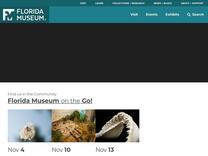Segmented Worm – Rare, Beautiful & Fascinating: 100 Years @FloridaMuseum https://www.floridamuseum.ufl.edu/100-years/object/segmented-worm/
Chaetopterus pump water through their parchment tube and filter small plankton through
Beautiful” Book Chaetopterus pump water through their parchment tube and filter small plankton

